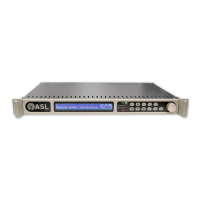VIPEDIA-12 Products – Installation Guide
U-0641-0344.docx – Issue: 8 complete, approved
Page 8 of 52
Fuse Replacement
Always replace blown fuses with the correct type and rating.
Battery Replacement, Handling and Storage
Caution! Risk of explosion if battery is replaced by an incorrect type.
The VIPEDIA-12 contains a lithium battery.
The maximum temperature rating of the battery varies from manufacturer to manufacturer.
The temperature rating of the chosen battery must be greater than 75°C (for example, Panasonic
BR2032 or Murata CR2032X).
External 24 V DC batteries connected to this unit can deliver very high currents that could cause
fire or burns.
Take care to avoid short-circuits of the battery supply by tools or jewellery.
Insulated battery terminal covers must always be fitted.
Do not allow tools or unconnected cables to rest on top of batteries.
Always use insulated tools.
Batteries should not be exposed to excessive heat such as sunshine, fire, etc.
External batteries should not be exposed to temperatures exceeding 25°C or stored for periods
of more than a few weeks without charging as this can significantly reduce their service life.
Dispose of all batteries responsibly by using authorised Waste Contractors and by ensuring all
relevant local waste regulations are followed.
Dispose of used batteries according to the instructions.
Never bury in the ground or incinerate at end-of-life.
Optical Fibre Connector and Module Handling
Optical fibre connectors and modules are precision-made components and must be handled accordingly.
Do not expose optical fibre connectors and modules to impact as damage to the surface of optical
connectors may cause higher attenuation impairing the transmission quality.
Always fit optical fibre connectors and modules with protective caps to guard them against mechanical
damage and contamination. The protective caps should only be removed prior to installation.
Once the protective caps have been removed, check the surfaces of the optical fibre connectors to ensure
that they are clean, and clean them if necessary. Clean the optical fibre connectors using a special optical
fibre cleaning tool or a clean lint-free cellulose cloth. Isopropyl alcohol (99%) can be used for cleaning.

